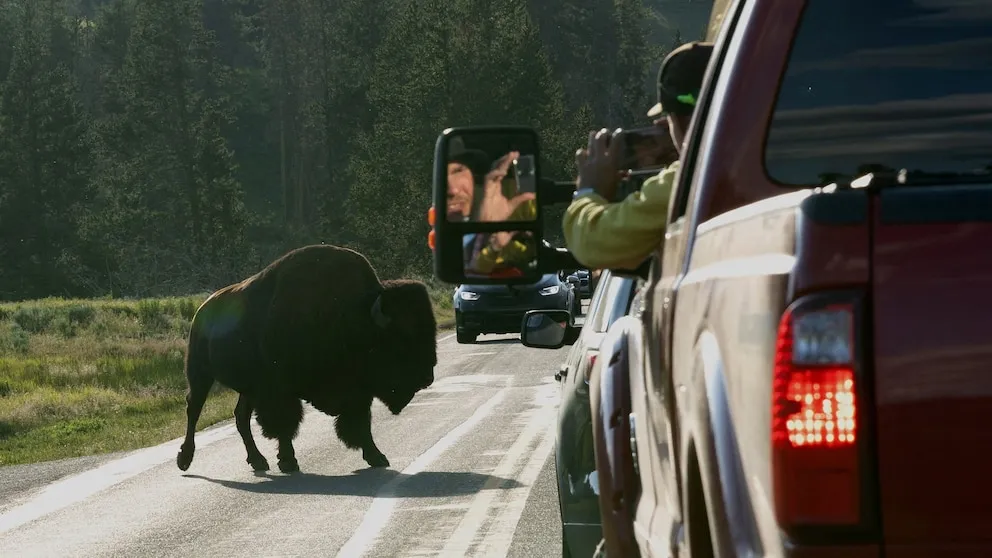Yellowstone Eruption: Debunking Misinformation as Wildlife Remains in the Park
The rumor mill has been churning rapidly, with alarming claims circulating on social media about an impending eruption of the Yellowstone supervolcano and how wildlife is instinctively fleeing the area. Such sensational stories lead to unnecessary panic among the public. Thankfully, the National Park Service (NPS) has stepped in, clarifying the situation and dispelling falsehoods surrounding the supposed exodus of wildlife.
The Origin of the Misinformation
In the age of social media, misinformation can spread like wildfire, and the Yellowstone supervolcano has often been at the center of such narratives. Various posts and videos have claimed that numerous animals, from bison to elk, were seen hastily migrating out of the park as if an eruption was nigh. However, these reports have been thoroughly debunked.
NPS Responds to the Claims
On their official Twitter account, the NPS addressed these circulating claims head-on. They stated unequivocally that there has been no mass migration of wildlife from Yellowstone. These animals have lived in the region for thousands of years and have adapted to various environmental factors, including volcanic activity.
The NPS reiterated that while animals may behave unusually due to external conditions, the suggestion of a widespread flight from Yellowstone is entirely unfounded. They emphasized the importance of relying on credible sources for information regarding the park’s natural events.
Understanding Yellowstone’s Supervolcano
To grasp the gravity of the misinformation circulating about Yellowstone, one must first understand what a supervolcano is. Yellowstone is home to one of the world’s largest active volcanic systems, with the last major eruption occurring approximately 640,000 years ago. Scientists have studied the caldera’s geology and hydrology extensively to monitor its activity level.
Currently, the supervolcano is under constant surveillance. The Yellowstone Volcano Observatory closely monitors seismic activity and ground deformation in the area. The chances of a catastrophic eruption occurring in the near future remain exceedingly low, so the panic surrounding this issue is unwarranted.
How Eruptions Occur
If the supervolcano were to erupt, the process would unfold over a significant period rather than happening suddenly. Geoscientists have mapped out the sequences that typically lead to an eruption:
- Earthquake Activity: Preliminary tremors would likely occur, indicating magma movement underground.
- Ground Deformation: Scientists would observe changes in the surface geometry of the park as magma accumulation occurs.
- Geyser and Hot Springs Activity: Increased geothermal activity and eruptions of geysers could be an initial sign.
- Explosive Phase: If conditions led to an eruption, it could result in the expulsion of ash and volcanic gases, significantly affecting the surrounding environment.
This timeline suggests that there would be significant warning signs long before any administrative or natural consequences became alarming, giving authorities time to prepare and respond appropriately.
Why the Wildlife Stays Put
One reason wildlife remains in Yellowstone, despite its volcanic nature, is their inherent adaptability. Animals in Yellowstone have coexisted with the geological features of the landscape over millennia, meaning they are equipped to handle the park’s unique conditions. Bison, for instance, can sense subtle environmental shifts, and while they may react to immediate threats, such as human intrusion or natural predators, there’s currently no cause for mass migration.
Additionally, wildlife is driven by the availability of food and habitat. Yellowstone offers vast stretches of undisturbed land rich with resources for various species. The value of this environment outweighs the uncertain threats posed by a potential supervolcano eruption.
The Role of the Public and Sensationalism
It is crucial for the public to approach sensational stories with a critical eye. The alarming narrative around wildlife fleeing Yellowstone bears the hallmark of classic sensationalism—leading to not only misinformation but also potential harm to both the public and the park’s protected ecosystem.
Spreading fear without factual grounding can lead to unnecessary panic and disrupt wildlife behavior. For instance, if people start flocking to Yellowstone in panic to witness the supposed mass exodus, this behavior could further stress the animals and impact their natural routines.
Educational Opportunities
Rather than succumbing to rumors, individuals can seek to educate themselves on the realities of Yellowstone and its fascinating geological processes. The NPS provides numerous resources, including guided tours, educational programs, and even live feeds that can help illuminate the majesty and science behind the park.
Additionally, social media platforms, while often breeding grounds for misinformation, can also serve as vital channels for public awareness when utilized correctly. Those who care about national parks can advocate for responsible sharing of information and engage in discussions backed by facts.
Conclusion
The false narrative regarding wildlife fleeing Yellowstone amid fears of a supervolcanic eruption has been successfully countered by the National Park Service and should serve as a reminder of the power of misinformation. As stewards of the environment, it is imperative to stay informed and advocate for accuracy in messaging surrounding our natural wonders. Instead of yielding to panic, let’s explore and protect our unique ecosystems responsibly and scientifically.
As we continue to learn about the complexities of Yellowstone and its geological wonders, we must do so with respect for wildlife and an understanding that these animals are right where they belong—thriving in their natural habitat, regardless of the rumors that may swirl around them.







